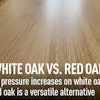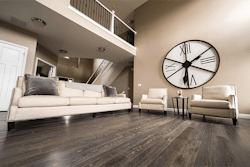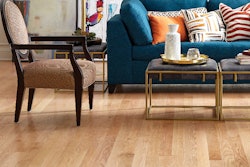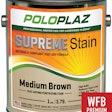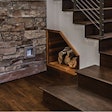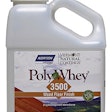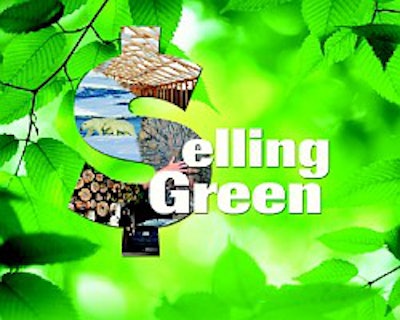
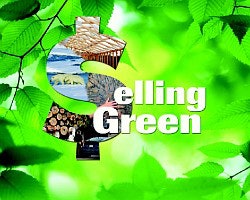
The last time the green movement was this hot, you might have been wearing bell-bottoms and a peace symbol around your neck.Today, concern for the environment is back at the forefront. Global warming is a daily topic on the news. Major corporations, even Wal-Mart,are rolling out their own green initiatives.Green building has become more prevalent, including a high-profile green overhaul of the entire U.S. Capitol complex. Many federal,state and local municipalities are mandating green building for publicly funded new construction.
Whether or not you are concerned about environmental issues,one thing is certain: some of your potential customers are. To satisfy them, you must be green-savvy and able to source green products. Keep in mind that "green" means different things to different people; following is an overview of some aspects that can come into play when discussing environmental wood flooring products.
A Good Start
A first step in discussing wood flooring as a green product is to turn conventional logic on its head. That logic says that cutting down trees is bad and destroys the forest. Actually, the majority of professionally managed hardwood forests in the U.S. and Canada today are sustainably harvested, meaning foresters analyze each area of the forest tree by tree and designate a percentage to be removed, leaving the majority to grow and also leaving the ecosystem intact (see "Forest Facts" in the August/September 2005 issue of Hardwood Floors). In reality, most forest destruction in the U.S. and Canada is caused by development, not the need for timber. Giving economic value to the forest creates an incentive to maintain the area as forest, as opposed to a subdivision, strip mall or parking lot. Trees are the ultimate renewable resource, helping reduce globalwarming-causing carbon dioxide in the process.
The green story continues past the forest into the wood flooring mill. The latest floor manufacturing equipment scans each piece of lumber for its most efficient use, and oftentimes, the wood dust created in the milling process is then used to power the mill or the dry kilns. Engineered flooring, by its nature, uses the raw material even more efficiently than solid wood flooring.
To give sound scientific footing to facts such as these, the NWFA's Industry Research Foundation has contracted with the University of Wisconsin to conduct an environmental impact study on the Life Cycle Assessment (LCA) of solid wood flooring versus non-wood flooring alternatives. LCA (also referred to as Life Cycle Analysis or "cradle-to-grave" analysis) is defined by the ISO as a "systematic set of procedures for compiling and examining the inputs and outputs of materials and energy and the associated environmental impacts directly attributable to the functioning of a product or service system throughout its life cycle." In this specific study, wood flooring's impact in terms of energy consumption, air pollution, water pollution, solid-waste pollution and climate change will be examined relative to competing non-wood products. The results are scheduled for release in October, and an LCA for engineered wood flooring is slated to be done next.
Wood Flooring Choices
Given what we already know about wood flooring, it seems likely that the LCA study will reveal wood to be an especially green product when compared with other types of floor coverings. But many environmentally minded customers need to know more than that; they will ask: Which wood floor is the most green of all?
While people in the industry would debate the answer, certain wood flooring products have impeccable environmental credentials. Reclaimed flooring, whether recovered from the bottom of a river or milled from an old factory floor, is one of them. Cork flooring, made from the bark of a type of oak tree that grows in Spain, Portugal and Morocco, is another; the bark is harvested and grows back without harming the tree. Because of its ability to rapidly regenerate, many people also consider bamboo (which is actually a type of grass) to be green, although discriminating environmental customers take care to avoid bamboo products constructed with ureaformaldehyde-based adhesives (and others would argue that rapid regeneration doesn't make a product any greener than wood products from a sustainably managed hardwood forest).
Consumers buying domestic species can be reasonably confident that the wood came from a sustainably harvested forest. With regards to the multitude of exotic species from around the globe, however, it is often difficult to know exactly where the wood came from, and given recent widespread media attention paid to illegal logging overseas, consumers are increasingly concerned about the source of their tropical wood (see the "Answers for Exotics" sidebar below).
Those who would like a guarantee that their wood flooring came from a sustainably managed forest, whether in North America or abroad, must turn to one of the certification systems currently in place. Those include:
• Forest Stewardship Council (FSC): The most wellknown certification program, FSC is international in scope and has the backing of most environmental groups. The program tracks wood from the forest to the end product.
• Sustainable Forest Initiative (SFI): This certification is overseen by the Sustainable Forest Board and was developed by the American Forest & Paper Association.
• Canadian Standards Association (CSA): CSA offers the National Standard for Sustainable Forest Management, a chain-of-custody program designed to track forest products from the forest to the consumer.
Green Building
It's increasingly likely that you'll find yourself working on a green-certified construction project. If so, you need to know what the green construction certification programs are and which wood flooring certifications they accept.
The most well-known of the certification programs in the U.S. is LEED (Leadership in Energy and Environmental Design), which was developed by the U.S. Green Building Council (USGBC). The best-known LEED certification is LEED-New Construction, which is for new commercial and institutional buildings. With LEED-New Construction, wood flooring can earn credits for being rapidly renewable (cork and bamboo), and also for being FSC-certified material. The rapidly renewable criteria and the FSC-only criteria are both being re-examined by the USGBC's Materials and Resources Technical Advisory Group with support from both the Yale School of Forestry and Sylvatica, a consulting company specializing in LCA analysis. The rapidly renewable credit may be changed to a broader credit taking wood's LCA into account, and the possibility of including SFI and CSA certifications is being examined, as well (revised language is expected to be out for public comment by this November).
A LEED for Homes certification is expected to be released by the end of this year. The residential certification parallels much of the existing LEED-New Construction certification guidelines. One significant difference, however, is that the pilot LEED for Homes certification requires that any tropical wood used be FSC-certified ("tropical" woods are determined by country of origin). This is a departure from typical LEED standards, which usually reward good environmental choices as opposed to punishing practices viewed as negative. Another difference is that LEED for Homes rewards using wood materials sourced from within 500 miles of the building site.
Since 2005, the National Association for Home Builders (NAHB) has offered its NAHB Model Green Home Building Guidelines. This voluntary program was designed with broad guidelines that can be adapted for different regions of NAHB membership; local home builder associations adapt the guidelines for their geographic area (there are currently 24 local programs and more than 100 in development). The NAHB guidelines recognize FSC, SFI and CSA certifications equally and also reward the use of any biobased material, such as wood, and recycled materials, such as reclaimed flooring.
In June, the NAHB board of directors also approved the creation of a national green building program based on the ANSI-certified National Green Building Standard, a model for residential construction and renovation scheduled for release in early 2008. It will be based on the existing NAHB Model Green Home Building Guidelines. The national program will give builders an NAHB-backed option for green home certification even if they don't have a local green building program in their area.
For commercial projects, there is also Green Globes certification, which is better-known in Canada and is relatively new in the United States. Green Globes also recognizes FSC, SFI and CSA certifications for wood flooring, rewards use of bio-based products that are LCA-assessed using approved software and also rewards use of recycled products. Green Globes is offered by the Green Building Initiative.
Beyond Wood
Of course, an eco-friendly wood floor also may involve other products; customers are concerned that their finishes and adhesives be green, as well.
There is no easy definition for an "environmentally responsible" finish or adhesive. Some consumers may want to avoid products containing petroleum; others may focus on "natural" ingredients. Some may consider the safety involved when using the product; yet others may take proximity of manufacturing into account. Still others may try to consider the entire LCA of those products, although formal LCA is not yet readily available for most finishes and adhesives. Independent green product certification systems such as Greenguard or Green Seal exist but aren't widely used in the wood flooring industry.
Given that, the easiest aspect to focus on is VOC content, but just because a solvent doesn't emit VOCs as defined by the EPA doesn't necessarily mean it's harmless. The U.S. Environmental Protection Agency (EPA) considers VOCs, or Volatile Organic Compounds, to be organic compounds that react with nitrogen oxide in heat and sunlight to create ground-level smog. The solvents used in finishes and adhesives are what determine VOC contents, which are usually measured in grams per liter (g/L). According to the EPA, architectural coatings (including wood floor finishes) are second only to automobiles among consumer and commercial products as producers of VOC emissions.
VOC laws for most finishes have gotten tougher in recent years, especially in California and the Northeast. This caused some oil-modified polyurethane manufacturers to reformulate their products to have lower VOC contents. Nationwide, current regulations mandate that VOC levels for most wood floor finishes be less than 450 g/L; tougher regulations exist in the Northeast and in California. In the Northeast, the Ozone Transport Commission (OTC) has a VOC limit of 350 g/L. The State of California has a limit set by the California Air Resources Board (CARB) of 350 g/L; a lower limit of 275 g/L in the Los Angeles area is set by the South Coast Air Quality Management District (SCAQMD).
In general, waterborne finishes tend to have the lowest VOC levels, and some waterborne products have extremely low levels—check with the manufacturer and the product's MSDS. Some products, such as shellac, wax or natural oils seem like they would be environmentally friendly (shellac, for example, is created by secretions from the lac bug), but when considering them, take into account the added solvents that enable the products to be applied to a wood floor. The bottom line for any product, regardless of type, is that contractors should check the MSDS and directions; they give insight into the actual solvents used and can also offer red flags, such as suggestions to turn off all sources of ignition when using the product (a good indication that a powerful solvent is involved).
Adhesives have also undergone major changes due to VOC laws and the demand for green products. It's a common joke among veteran wood flooring contractors that years ago they didn't have to do drugs—their wood flooring adhesives were enough. Fortunately for environmentally concerned consumers (and installers), adhesives have come a long way since those days. Today, the CARB limit is 15 percent by weight, and the SCAQMD limit is 100 g/L. The CARB limit will change to 7 percent by weight on January 1, 2009. There currently are no EPA limits for wood flooring adhesives, but the EPA is expected to adopt the CARB limits.
Several manufacturers now offer no-VOC, solvent-free wood floor adhesives. There are no hard-and-fast rules for which types of adhesives offer which VOC levels, but in general, water-based adhesives typically have relatively low or no VOCs. There are several high-solids, polymeric resin adhesives and at least one moisture-cure adhesive on the market that are no-VOC or trace-VOC and solvent-free. For details on VOC levels and solvents, contractors should check with the manufacturer, and also make sure the adhesive works with the flooring they've chosen. Again, MSDS and product directions are a good source for insight on the solvents in the product.
The building certification programs vary on how they treat finishes and adhesives:
LEED-New Construction and LEED for Homes: Adhesives and finishes must comply with the VOC limits of the SCAQMD rules (275 g/L for wood floor finish and 100 g/L for wood flooring adhesives).
NAHB Model Green Building Guidelines: Wood flooring finishes and adhesives are not specifically addressed.
Green Globes: Credit is given under Indoor Environment rules for "low emitting, chemically inert and non-toxic" chemicals, adhesives and sealants (including floor finishes).
Here to Stay
This time around, the green movement isn't just a fad. Low-VOC products are required by law, and green building is increasingly being chosen and even mandated. For wood flooring professionals, being fluent in the green aspects of the industry isn't only environmentally responsible, it's good business.
Sources for this article included: Lisa DiMartino, Environmental Home Center; Jason Grant and Bill Jopling, Wood Flooring International; Dan Harrington, EcoTimber; Ed Korczak, NWFA; John Lio and Larry Scott, DriTac Adhesive Group; Robert McNamara, Bostik; Michelle Moore, USGBC; Donna Reichle, NAHB; Kevin A. Stover, PE, GBI; and Gerald Thompson, BonaKemi USA.
Green Alphabet Soup
When you're talking green in the wood flooring industry, these acronyms and initialisms, among many others, often come into play:
CARB: California Air Resources Board (arb.ca.gov)
CSA: Canadian Standards Association—offers the National Standard for Sustainable Forest Management (csa-international.org)
EIA: Environmental Investigation Agency (eia-global.org/forests.html)
FSC: Forest Stewardship Council (fsc.org)
GBI: Green Building Initiative—offers Green Globes certification and promotes NAHB Model Green Building Guidelines (www.thegbi.org)
LEED: Leadership in Energy and Environmental Design (usgbc.org/leed)
NAHB: National Association of Home Builders (nahb.org)
OTC: Ozone Transport Commission (otcair.org)
PEFC: Programme for the Endorsement of Forest Certification (pefc.org)
SCS: Scientific Certification Systems—a certifying body for FSC (scscertified.org)
SFI: Sustainable Forestry Initiative (sfiprogram.org)
SCAQMD: South Coast Air Quality Management District (of California)(aqmd.gov)
TFF: Tropical Forest Foundation (tropicalforestfoundation.org)
TFT: Tropical Forest Trust (tropicalforesttrust.com)
USGBC: U.S. Green Building Council—offers the LEED program (usgbc.org)
VOC: Volatile Organic Compound
WWF: World Wildlife Fund—runs the Global Forest & Trade Network (www.panda.org)
Answers for Exotics
Increasing attention is being brought to the source of the imported timber used for, among other things, wood flooring. Newspapers such as the The Chicago Tribune and The Washington Post have run extensive articles, even a Sunday cover story, with headlines such as "Corruption Stains Timber Trade" (The Washington Post, April 1, 2007) and "The Hidden Cost of Your Hardwood Floor" (The Chicago Tribune, December 18, 2006), and Nat ional Geographic's January 2007 issue featured a cover story on the destruction of the rainforests in the Amazon basin. Merbau in particular has been the focus of increased scrutiny, with several major wood flooring suppliers accused in the media of using illegally logged merbau.
To answer concerns about illegal logging, a bipartisan bill was introduced to the House of Representatives in March that would prohibit trade in timber illegally harvested outside the United States. Dubbed the Legal Timber Protection Act, it is an amendment to the 1981 amendments to the Lacey Act, which prohibits trade in wildlife or plants that have been illegally taken, possessed, transported or sold. Currently, the law only applies to plants (including trees) from the United States or endangered foreign species, but the bill would extend its protections to all plants from outside U.S. borders.
The bill aims to not only prevent illegal logging, but, as its name implies, also to protect U.S. timber businesses from unfair competition due to illegal logging. A 2004 U.S. Forest and Paper Association report estimated that illegal logging costs U.S. companies as much as $1 billion a year in lost exports and reduced prices. (To that end, a U.S. International Trade Commission investigation was launched last spring to examine how logging practices by China and other countries may be affecting U.S. markets for solid and engineered wood flooring, as well as hardwood plywood. The results are expected in late 2008.) As of press time, the bill was in a House subcommittee, and both environmental organizations and wood industry groups are in favor.
NWFA has been lobbying on behalf of the bill through its participation in the Hardwood Federation, a coalition of forest products organizations. "We are all very much in favor of legal logging, and we believe the Lacey Act is a good way to be able to protect that," says NWFA Executive Director/CEO Ed Korczak. In addition, he says, it would help eliminate the current perception that manufacturers are "guilty until proven innocent." How "legal" would be determined is still unclear. The Hardwood Federation has been lobbying for a chain-of-custody system. "We need a chain-of-custody process that is supported by not only our government, but also the exporting government so that everything is clearly and properly documented," Korczak explains, adding that it may take years for that to happen in some countries—"but if we don't start, it will never happen."
In the meantime, wood flooring manufacturers importing exotic species are left with the "guilty until proven innocent" assumption unless they take steps to prove otherwise. Armstrong World Industries, the largest wood flooring manufacturer in the world, has had a long-standing requirement that all materials used in its products be legally acquired, and this year it announced that it is partnering with the Tropical Forest Foundation (TFF), a non-profit organization focused on sustainable forestry throughout the world. As part of the partnership, TFF is developing independent third-party verification to further verify that Armstrong's suppliers obtain lumber legally. "It's a very small percentage of what we do—tropical hardwoods are probably less than 3 percent of our business—but at the same time, it's very important that we understand where these materials are coming from," says Dick Quinlan, general manager of Armstrong's Bruce Hardwood Floors.
Meanwhile, wood flooring manufacturer Wood Flooring International sells FSC-certified products, as it has for years, and more recently has become a participant in the WWF's Global Forest & Trade Network, which, among other things, aims to eliminate illegal logging by implementing a stepwise approach to improve forest management around the globe. Additionally, WFI is a supporter of the Legal Timber Protection Act, although company CEO Bill Jopling, like many people, is interested to see how the claims of "legally" imported lumber will be verified. Tracking tropical timbers from forest to floor can be a nightmare, he says, speaking from personal experience. Yet, "We decided to support the bill, because at the highest level, we believe the intention is good," he says. —K.M.W.













